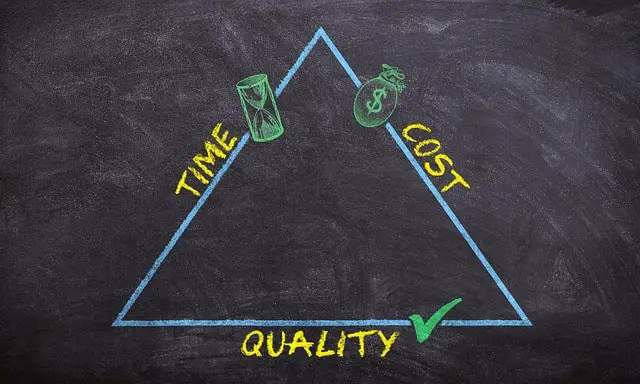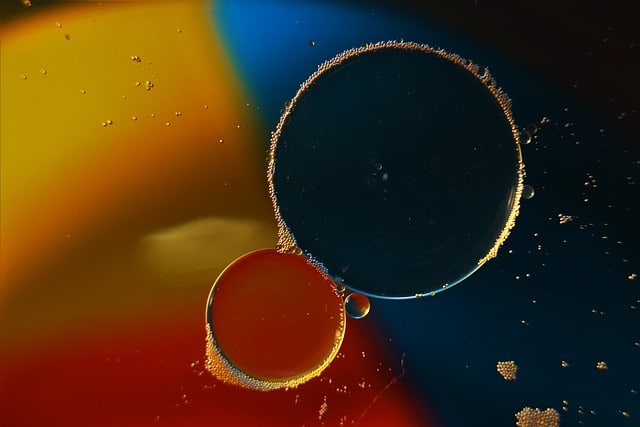
Desalination may seem like a completely obvious solution for all the world’s problems with water, however, one thing that must be considered is its efficiency. Desalination uses a lot of energy and creates a lot of waste. Like any process we should endeavour to make it more efficient, with more output from reduced inputs, this got me thinking about the key areas of focus needed to make this a reality.
Desalination efficiency is improved by minimizing energy demands, utilizing by-products and technological advancement. A clever way energy use can be optimized is by cost sharing amongst other industrial processes, whilst utilizing by-products as sources of minerals like Magnesium and Sodium.
Cooling Power Stations As A Source Of Heat
An extremely useful synergy has begun to be taken advantage of between gas or coal-fired power stations and desalination plants. The power stations require huge amounts of water as coolant whilst distillation-based desalination facilities require heat to bring salt water closer to the point of evaporation.
By building desalination plants next to existing power stations, they are able to take advantage of a free source of heat whilst taking care of their neighbour’s cooling requirements. To quantify how much energy is actually being saved through this relationship, it must first be calculated how much water is required to cool an average power station and how that can be utilized in desalination.

An average 2x 500MW coal-fired power plant requires approximately 60,000 m3 of cooling water per hour, with a general temperature increase of 9.5 degrees celsius per m3. Assuming 24 hours of operation, this would result in 1.44 billion litres of water being warmed by 7 to 9.5 degrees. Although plant efficiencies can vary, if you assume even the upper end of coal-fired power plant efficiencies of 40% that is a huge amount of wasted energy available to be utilized, in the realm of 14.5 million kWh per day.
The reason a smaller quantity of water cannot be heated to a higher temperature is due to the cooling efficiency dropping as water temperature increases. So, the optimal amount is 7-9.5 degrees of heat absorbed by cooling water as it moves through the system, any slower movement than that would result in overheating of the powerplant. Based on this, the power plant cannot provide 100% of the desalination plant’s thermal energy requirements as the water typically needs to be increased by ~70 degrees in the MSF distillation process, however, it is still a significant energy saving. To put it into perspective, one kilo of coal delivers approximately 2kwh, which means if a desalination plant were able to make use of all cooling water, approximately 14,000 fewer tonnes of coal would need to be burnt.
This technique is currently being implemented to varying degrees, including at the world’s largest desalination plant: Ras Al Khair in Saudi Arabia.
Extracting Minerals from Desalination Waste
Mining desalination waste is a currently underutilized method for increasing the efficiency of the desalination process. The ability to extract minerals of economic value from the desalination waste products has two principal benefits: it makes the process more profitable thus decreasing the cost per litre, whilst also benefiting the environment through waste reduction.
Extracting minerals from the ocean is not a new phenomenon, from historical attempts to mine gold to more recent conversations around lithium. The main issue holding such projects back is the cost, too much water needs to be processed in order to extract the given minerals, this is obviously a sliding scale affected by current price movements. Desalination’s primary waste product is a highly saline brine, a concentrated solution of a variety of minerals in the water. Mining saline brine represents an opportunity over traditional seawater mining in that the concentration of minerals is highly elevated, thus meaning less liquid needs to be processed in order to extract an amount of a given mineral.

The trick to making mineral extraction from brine a reality is to focus on those minerals & compounds that are worth more than their cost to extract. A 2021 study from nature.com focussed on the pure economics of the available minerals, utilizing a pre-existing study from the University of Firenze in Italy that focussed in on minerals in seawater. When applied to the highly concentrated brines produced from desalination, the economics greatly improved, particularly for various forms of sodium, magnesium, calcium and potassium. The only part that is holding this fledgling industry back is fluctuating mineral prices and the subsequent investment required to attempt such extraction at a commercial scale, if multiple minerals can be extracted simultaneously then the economics of this process improves dramatically.
“As technologies for seawater brine mining develop, desalination concentrate as a source of minerals becomes more economically and environmentally viable.”
Seawater desalination concentrate—a new frontier for sustainable mining of valuable minerals, Basel Abu Sharkh et al, NPJ: Clean Water, 2022
One interesting study from MIT discussed the potential extraction of Sodium hydroxide (Caustic soda), a compound that is often utilized in pre-treatment of desalination water to prevent blockages of membranes. Extracting a process compound like caustic soda from the saline brine represents a rather new frontier where the entire desalination process moves to become self-sufficient.
Advancements in Desalination Technology
Multi-Stage Flash (MSF) Desalination and Reverse-Osmosis (RO) represent the two largest desalination technology advancements in history, unfortunately, both MSF and RO were invented at a commercial scale in the 1950s. So, unlike many other areas of technology, desalination has not progressed in line with society’s advancement as a whole, as a general rule desalination plants are using 70-year-old technology! Not to say there has been zero work on the topic, Dupont made a breakthrough in 2009 when closed circuit reverse osmosis (CCRO) was invented. A tweak on the RO process, CCRO involved automatic flushing of the membrane periodically as a part of a closed circuit during desalination, this resulted in greatly increased equipment lifespan, however, the underlying technology remained the same. This leads to the idea that the underlying technology represents a huge opportunity to increase the efficiency of the systems and subsequent adoption around the world, with water becoming more of an issue worldwide, watch this space.

https://cea.nic.in/wp-content/uploads/2020/04/min_of-water_coal_power.pdf
https://www.ge.com/power/transform/article.transform.articles.2018.mar.come-hele-or-high-water
https://www.sciencedirect.com/topics/engineering/multi-stage-flash-distillation#:~:text=Desalination%20is%20energy%2Dintensive.,be%20used%2C%20including%20solar%20energy.
https://letsdowater.com/the-worlds-biggest-desalination-plant-9-impressive-statistics/
https://www.discovermagazine.com/the-sciences/6-times-we-tried-to-extract-gold-from-seawater
https://www.science.org/content/article/seawater-could-provide-nearly-unlimited-amounts-critical-battery material#:~:text=Researchers%20have%20devised%20numerous%20filters,efforts%20have%20not%20proved%20economical.
https://www.mdpi.com/2071-1050/2/4/980
https://www.nature.com/articles/s41545-022-00153-6
https://news.mit.edu/2019/brine-desalianation-waste-sodium-hydroxide-0213
https://www.dupont.com/brands/desalitec-ccro-high-efficiency-ro.html


